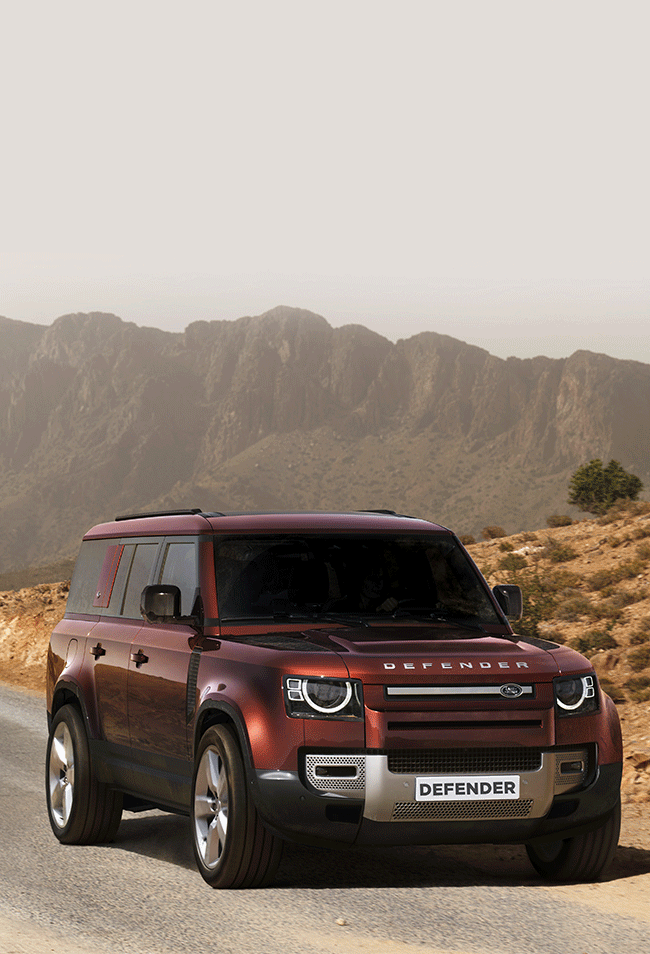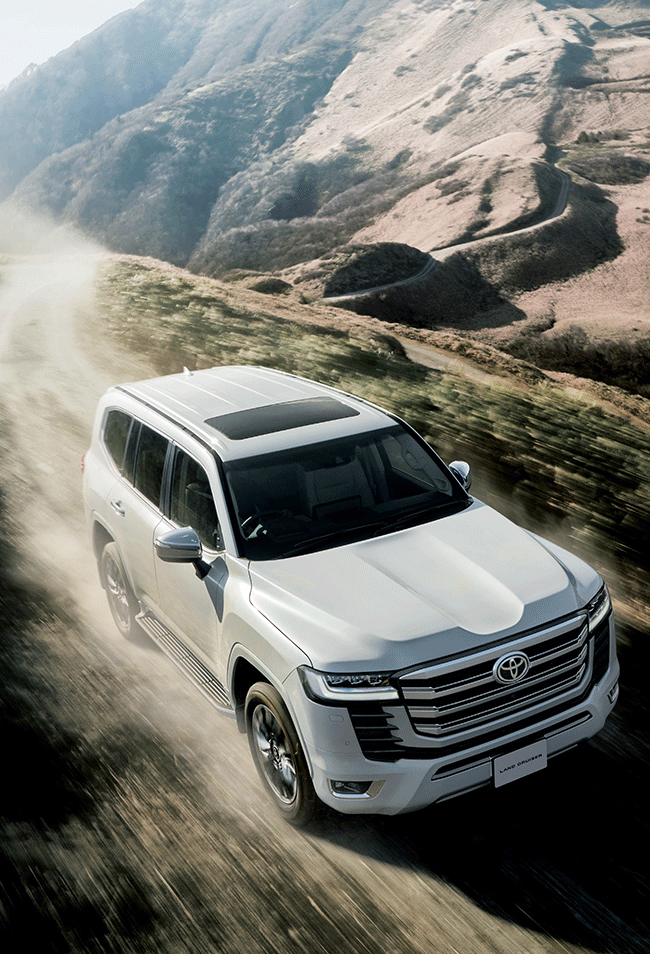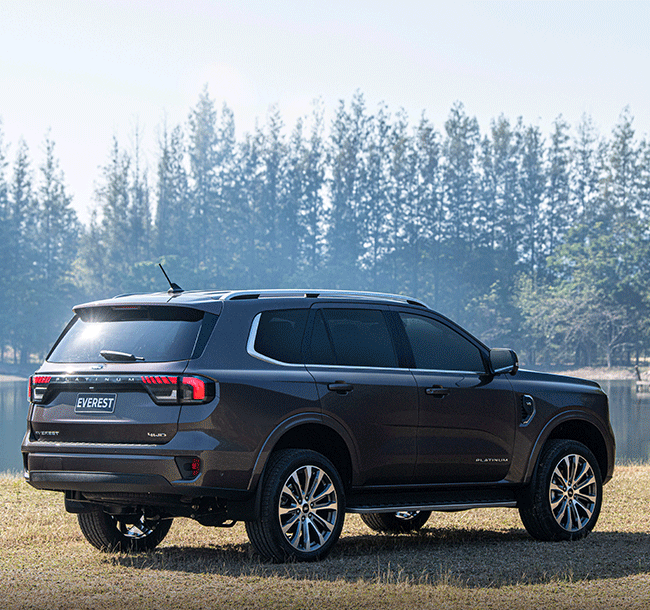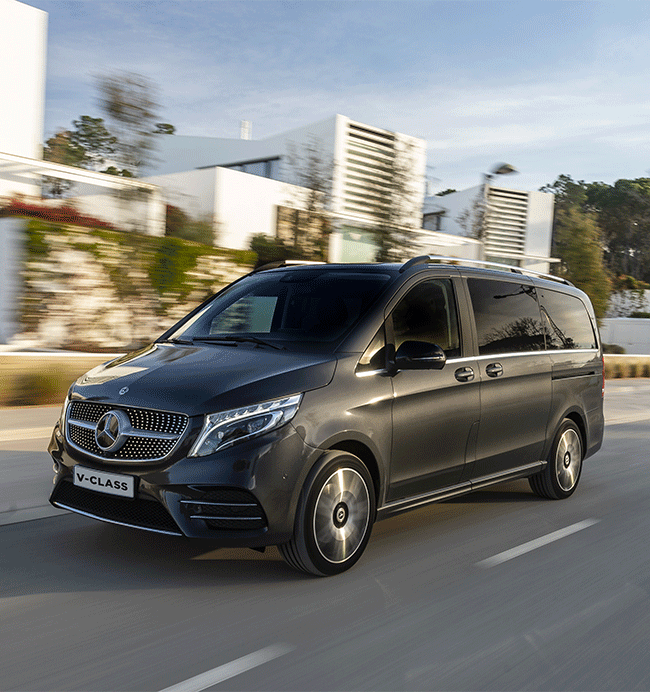The first purpose-built people carrier, Chevrolet’s 1935 Suburban, was made to ferry National Guard soldiers across the US, a truck-not-a-truck in search of a riot. Fast forward 87 years and though the annual family holiday can feel like a riot, the transport is no longer the reason for the tumult; thank technology and design excellence for the ascendency of the people carrier, the car of choice for many, even those without the requisite four plus luggage.
The double-cab-based seven-seater is still a popular choice for South Africans. The appeal is obvious; a vehicle that can theoretically go anywhere while ferrying the family. There are issues, however, notably that most double cabs are still on a ladder chassis with long travel suspension. That means there is intrusion into the passenger cell, taking up valuable space. Add the extra two seats at the back and they are predictably tight because of the suspension struts. There is also the issue of luggage space once the rear-most seats are occupied. Typically, this is overcome by a trailer or roof rack.
Leading the sales field is Toyota’s Hilux-based Fortuner, a perennial favourite, loved for its relative value, strength and reliability. A new Fortuner is on the horizon – likely late 2023 – and it will feature a hybrid-diesel powertrain. The good news is that the body-on-chassis construction will remain, cementing its offroad prowess. For Toyota fans wanting more bang for their people-carrying buck, the company has plenty on offer. Hugely popular is the recently introduced Toyota Land Cruiser 300 3.3D GR-Sport. Toyota’s racing wing, Gazoo Racing, has been successful at the Dakar Rally and some of that kudos is being deployed in the wider fleet; GR means more power and a more striking profile. So it is with the Land Cruiser 300; both diesel and petrol engine options are more powerful, and the red-and-black treatment has proven wildly popular.
At the top of the Toyota tree is sister brand Lexus’ LX 600, demonstrably the largest, most luxurious people carrier to come out of the East. LX is the chosen vehicle of oil billionaires as much for its off-road ability as the sumptuous interior. Engines mirror its sibling, the Land Cruiser, and only the 600 is a seven-seater; the 500 and range-topping VIP making do with five and four respectively. There are five variants, all on the latest ladder-frame GA-F platform, all sporting Lexus’ trademark spindle grill, front and rear differentials and a locking Torsen centre differential. Inside the wood-lined interior there’s fingerprint verification for the start button, a digital rear-view mirror, 12.3-inch touchscreen and a 25-speaker Mark Levinson surround-sound system and a moonroof, among others. In addition to the centre slip diff, F Sport models get a rear Torsen limited-slip differential, front and rear performance dampers and a unique electric power-steering tune.
Across the world, Land Rover has been busy, upping the ante with its successful new Defender. It has added the 130 to live alongside the 90 and 110. The new bundu basher is a full eight-seater with a complete third row. The extra length is in the tail – the wheelbase stays the same. Land Rover has given that tail a slight ‘boat-tail’ to ensure the departure angles are still impressive. The 130 joins the Discovery and Range Rover as the firm’s people carriers, though it’s the most spacious by some margin.
Also new to the SA market is Ford’s upgraded Everest, now built in Thailand, as the local factory will concentrate on the new Ranger and VW Amarok. The Ford Everest Platinum is the seven-seater of choice; a combination of luxury, space and a degree of sportiness. That sportiness comes from the new V6 turbodiesel unit, long overdue in this large, heavy car. The previous 2-litre diesel unit is available in the Sport. Inside and out the Everest has been completely redesigned, and while it remains a body- on-chassis design, it is a wholly sophisticated product, especially inside where a huge digital interface – tablet-like – fronts a mass of new technology. Comfort, too, is improved, as is space. It is expensive though; the Fortuner, Isuzu’s impressive new mu-X and Mitsubishi’s Pajero Sport are all considerably cheaper, though none of them offers a V6 engine.
It’s in the comfort stakes that people carriers have truly walked a long road. Heading up the segment marked ‘didn’t-see-that-coming’ is Hyundai’s palatial Palisade, an eight- or seven-seater with an innovative two-two-three seating set-up. That makes a lot of sense if the car is mostly going to see duty as a carrier of four at most. Those four will be carried around in exceptional comfort. A neat trick, one that the new version, due in mid-2023, will continue to employ.
The true stars of the large people-carrier firmament are two rivals, Mercedes-Benz’s GLS and BMW’s X7. The sizeable X7 is not as popular as the X5, and the next model will be part hybrid, but it still offers more presence than most in the line-up. Paired with the 8-cylinder 4.4-litre engine of the M60i, it cannot be beaten for sheer on-road authority.
The big Merc, too, has seen much success, due to the inclusion of the efficient, powerful 400d turbodiesel engine in the line-up. It adds an extra element to an already potent offering. The car’s electronic air suspension is a winner most notably, working in tandem with extra-cushioned seats to provide industry-leading comfort. For even more exclusivity, the company’s Maybach arm will offer eight cylinders and a raft of interior extras in the GLS 600.
Much further up the affordability scale, but fully worth a mention, is Peugeot’s supremely comfortable 5008. It’s not the largest seven-seater, the most powerful or the most popular but it is one of the quietest, a genuinely engaging drive and hands down the most inventive in terms of design and interior innovation. Its five-seater sister, the 3008, sells well, but this extended wheelbase offering is the pick of the line-up.
In terms of adventure and innovation in the bus segment of the people-carrier market, Hyundai most definitely set the cat among the pigeons when it recently introduced the Staria, a starship alien clearly from another planet. The company’s assertion – that buses need be neither boring nor predictable – has proven prescient. Staria is selling well, and winning customers left right and centre. It’s doubly ironic, given that Hyundai’s last bus, the H1, might be the most boring vehicle ever made.
The Korean company is not the only marque playing with bus expectations – Opel’s Zafira, once a double-dull station wagon, has morphed into an interestingly sized bus; not as big as its competitors but still good for seven plus their luggage. The big-not-big size appeals to an urban market that has to battle narrow roads and limited parking. The bonus is that Zafira is good to drive, a dynamic chassis making it excellent as a touring vehicle. The gutsy 2-litre diesel engine also makes it relatively frugal.
As new blood floods the bus market, the old tricksters continue – and move ever upwards; both Mercedes and Volkswagen ask top dollar for their buses now, albeit the exclusive range-toppers. The Mercedes-Benz V-Class is the unrivalled king of the bus boys, the luxury and exclusivity of an E-Class wrapped in Vito clothes. The range is configurable to accommodate either six, seven or eight passengers in benches or individual seats. Volkswagen’s Caravelle runs with a similar 2-litre turbodiesel engine and also offers a degree of luxury over and above the standard transporter.
It’s in the urban space that the people-carrier market has exploded. Technology advances mean that these transporters can run on smaller engines, making them acceptably fuel efficient and at the same time luxurious and good to drive. The disruptors have once again been the Koreans – with both Hyundai and Kia bringing innovative, handsome cars to market that have found favour among large families as well as leisure businesses. Kia’s Carnival is the standout star, good looking with real presence, a gutsy and sophisticated 2.2-litre turbodiesel engine and a first-class, configurable interior. The sliding doors are also a plus point – it’s a bus but patently not a bus.
Not to be outdone, sister company Hyundai brought Sante Fe to market, a 4WD seven-seater that is visually more SUV than MPV, more masculine. Its natural enemy is actually Kia’s Sorento, an AWD seven-seater. It goes without saying then that the Koreans aim to corner the market in executive people carriers.
Though not if Volkswagen has anything to do with it. Two new carriers aim to steal market share from the Koreans. The Caddy Kombi and the Tiguan Allspace are specially stretched seven-seaters made for the growing family (and their luggage), while still trading in a degree of exclusivity. The German origin still counts for much, a point VW is keen to push.
Finally, it would be mad not to acknowledge the onslaught from China. Though makers there were previously dismissed as inferior, a slew of models have announced themselves of late, rewriting the books and upending the market. Most successful of all has been Chery, and the recently introduced Chery Tiggo 8 Pro looks to be stealing significant numbers from both the Koreans and the Germans. That isn’t a complete surprise – the quality and warranties are next level, even if the engines and dynamics are still a generation away from their competitors. And as Haval, Chery and others get ever bolder, new, larger models are in the offing.
It won’t be long before the Chinese seven-seater is a real competitor. More competition, better product, better value.













